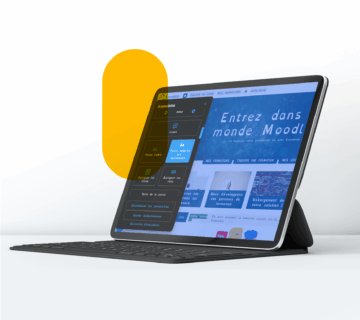Home > Blog
Blog
Accessibility
9 December 2025 | 3 minutes
Accessibility – who does it affect?
It’s more than the physical and permanent, it’s about how we write emails, design documents, deliver training, signage and communicate with the world around us
Learn more
Accessibility
How to get your LMS ready to meet the European Accessibility Act requirements
2 December 2025 | 6 minutes
Read how to make sure your Moodle or Totara platform meets EAA requirements and delivers a better learning experience for everyone
Learn more
Events
L&DI Conference 2025: Highlights
1 December 2025 | 2 minutes
Over 300 L&D professionals gathered in Croke Park to explore how to shape a learning culture ready for tomorrow’s world — one defined by automation, inequality, and rapid change.
Learn more
Artificial Intelligence
Artificial intelligence: Open Source LMS
27 November 2025 | 10 minutes
This is a comprehensive overview of the main use cases where AI is transforming online training
Learn more
Accessibility
What is the European Accessibility Act (EAA)?
25 November 2025 | 3 minutes
This directive is reshaping how digital platforms in Europe, including Learning Management Systems (LMSs), now need to be accessible to everyone
Learn more
Moodle
Video: Copilot plugin and agent samples for Moodle
19 November 2025 | 2 minutes
From listing your courses to checking overdue assignments—the Microsoft Copilot integration brings Moodle to your fingertips across Microsoft 365 apps. See the teacher and student agents in action.
Learn more
Events
Learnovation 2025: Highlights
5 October 2025 | 2 minutes
Key highlights and insights from the Learnovation 2025 Conference in Dublin
Learn more
Awards
Enovation named Moodle Premium Certified Partner of the Year 2025 (EMEA)
24 September 2025 | 2 minutes
Proud and honoured to receive this award from Moodle
Learn more
Artificial Intelligence
Copilot plugin and agent samples for Moodle
2 September 2025 | 3 minutes
We’re pleased to announce that following collaboration with Microsoft we have now developed — and successfully released — the Microsoft 365 Copilot plugin (local_copilot) for Moodle.
Learn more
Learning Analytics
Metabase BI – Moodle reporting on steroids
1 September 2025 | 3 minutes
Metabase addresses a key challenge faced by many organisations: stakeholders care about analytics and data-driven decision-making but often lack the tools or technical skills to extract meaningful insights from their data.
Learn more
e-Learning
Moodle vs Totara – Ready to move beyond the platform debate and find the solution that fits?
21 August 2025 | 3 mins
The best LMS is not the one with the most features, it’s the one that solves your specific problems.
Learn more
Member Associations
Why enoHub is more than a learning platform, it’s your digital library for member value
19 June 2025 | 3 minutes
At Enovation, we don’t just build learning platforms, we design smart ecosystems that transform how your members access knowledge.
Learn more
Events
Helix 2025 International Summit: Reflection
20 May 2025 | 2 minutes
We’ve been reflecting on one of the most important conversations happening in the healthcare sector today.
Learn more

